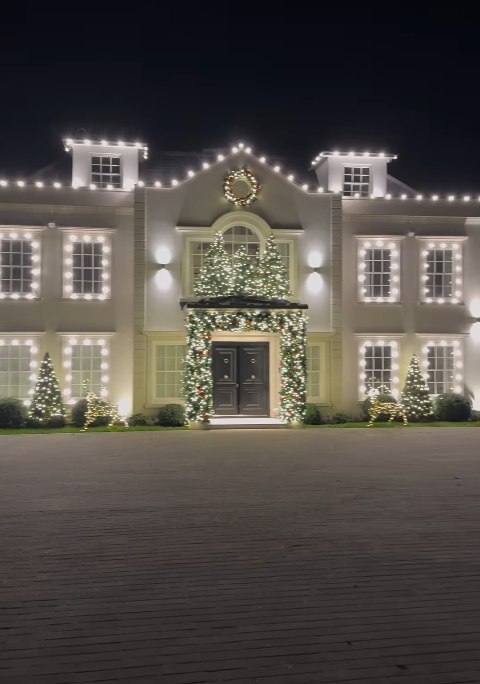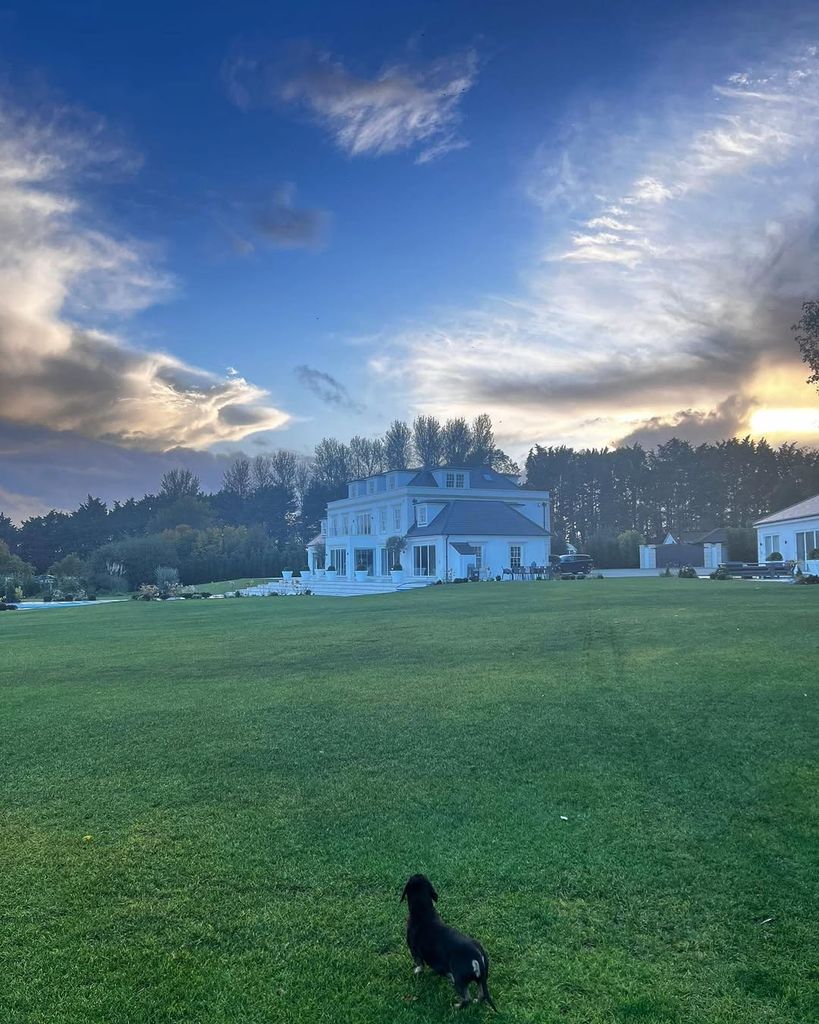Michelle Keegan and Mark Wright have always been 'couple goals', but ever since they unveiled the staggeringly impressive mansion in Essex they built from scratch earlier this year, they've also cemented themselves well and truly in the 'house goals' camp.
The pair, who wed in 2015 in a gorgeous ceremony covered exclusive by HELLO!, are, rightly so, proud of their home that they put their heart and soul into designing and often share updates on their Instagram account dedicated to their house, @wrightyhome.
On the page, followed by more than 650,000 dedicated fans, Mark and Michelle, both 37, post videos and photos giving a glimpse inside the stunning property which boasts five bedrooms including a master suite, a bar, a bespoke gym, a cinema room, an enviable kitchen and a bathroom that comes with its own sauna and steam room.
Outside, meanwhile, the former TOWIE star and the Our Girl actress have installed a full-size pool with a terrace area that wouldn't look out of place at a Mediterranean beach club.
They also have an enormous lawn that looks like it goes on forever - perfect for when Mark, keen footballer, wants to brush up on his soccer skills.
A house of this size is what many can only dream of. What's more, the pair are fortunate that a mortgage is non-existent due to buying the land outright and building the home themselves.
However, Mark and Michelle aren't immune to good old-fashioned household bills. So how much might they be in a home of this size? We spoke to a luxury property expert to investigate.
Mark Wright and Michelle Keegan's 'costly' household bills are 'significantly above average'
HELLO! spoke with Stephen Day, a Heating Engineer and Energy expert from iHeat, who gave fascinating insight into how much household bills could cost in a mega-mansion similar to that of Mark and Michelle's.
"Given the size and luxury features of their mansion, it's likely that their monthly energy bills could be just shy of a whopping £3,000 a month," Stephen explained.
The specifications of the home offer guidance on the estimation.
"Due to the size of the property, for heating and cooling alone the house could consume around 5,000 kWh per month, costing approximately £1,225 (based on the current energy price of 24.5p per kWh). If the home includes underfloor heating, a common feature in properties of this calibre, this could add further to the overall energy consumption, adding an extra £750 a month."
Stephen continued: "Their Ibiza-inspired outdoor heated pool is another significant contributor to their energy bills, with an estimated energy usage of 2,000 kWh per month, equating to about £490. Add in the electricity needed for their extensive lighting, appliances, and other luxury systems such as their cinema room and this could add another 1,500 kWh monthly, costing around £368."
MORE: Mark Wright debuts very private living area inside £3.5m mansion with Michelle Keegan
MORE: Mark Wright and Michelle Keegan leave fans flabbergasted with huge home makeover
All this considered, Stephen notes that bills could be higher for the pair during winter months.
Although the bills the couple face are "significantly higher" than the average, Stephen notes they're typical of a house this size.
"For properties of this size, it’s relatively standard, especially given the home includes luxury features like heated flooring, extensive lighting systems, a home cinema and a home gym, all of which consume considerable energy compared to your average family home."
How Mark and Michelle could keep bills down in mega-mansion
However, there are many benefits that Mark and Michelle reap as the owners of a self-built home.
As Stephen explains, "building a home from scratch gives you the opportunity to integrate energy-efficient solutions quite literally from the ground up, helping offset high running costs as soon as you move in."
He added: "You can incorporate advanced insulation materials, triple-glazed windows, smart heating and even solar panels far more easily and have them blend in far more cohesively.
"Modern building techniques and materials are also designed to maximise thermal efficiency and prevent energy wastage, ensuring that heating and cooling systems work more efficiently.
"Over time, these features can lead to much lower running costs compared to older homes, even with those of a similar size."













